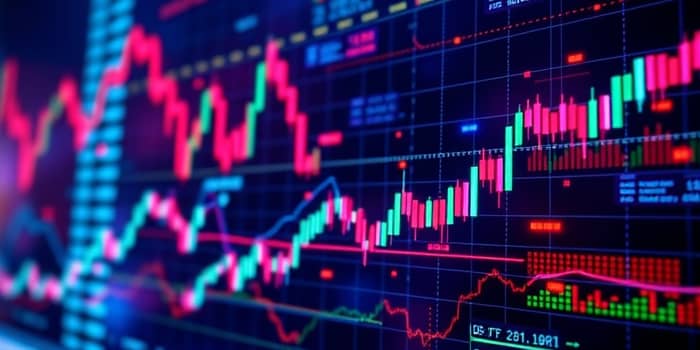
Intraday price movements are no longer solely dictated by human intuition or slower manual processes. Instead, cutting-edge computer algorithms now analyze massive volumes of real-time data and react in microseconds. This article delves into how algorithmic trading has transformed price dynamics within the course of a single trading day, reshaping liquidity patterns, volatility characteristics, and overall market fairness.
By examining definitions, strategy frameworks, empirical evidence, regulatory responses, and future trends, readers will gain a comprehensive understanding of this complex yet vitally important domain.
Algorithmic trading, also known as automated or black-box trading, leverages computer programs that execute pre-defined instructions across parameters such as timing, price, and volume. Its adoption skyrocketed in response to demands for unprecedented speed and decision precision, as well as the ability to process massive volumes of real-time data without human delay.
Since the early 2000s, financial institutions and hedge funds have poured resources into developing proprietary algorithms capable of dissecting price signals and order book fluctuations. This technological shift has turned trading floors silent, replaced by servers and co-location facilities where execution times are measured in microseconds rather than seconds.
Projections indicate a steady climb to a $4.06 billion market by 2032, driven by the fusion of AI and ML into trading strategies. In particular, the U.S. sector is poised to exceed $1 billion, underlining the integration of state-of-the-art technologies into mainstream financial institutions.
Intraday algorithms operate on tick data, price moves, order book depths, and trade volumes, allowing responses in fractions of a second. Common strategies include:
By removing human emotion and bias, these systems foster greater objectivity and can act far faster than manual trading desks. Yet, when hundreds of algorithms chase the same signals, they can occasionally synchronize in ways that amplify price swings.
Empirical research shows algorithmic trading has both stabilizing and destabilizing effects. On balance, liquidity generally improves, with tightening bid-ask spreads and reducing transaction costs across highly liquid assets. Enhanced liquidity also curtails order imbalances, minimizing market impact through adaptive execution that spreads large trades intelligently.
Volatility metrics reveal fewer extreme intraday price jumps under normal conditions, as algorithms absorb shocks and even out order flows. However, during sudden news events or technical glitches, herd-like behavior can trigger rapid, self-reinforcing feedback loops. Notable flash crashes underscore the potential for programs to collectively accelerate downward or upward spirals.
Regarding price discovery, algos react instantly to new information, refining quoted prices and making markets more efficient. Yet certain arbitrage routines thrive on leftover inefficiencies, profiting from microstructure quirks before they vanish.
Behind every high-speed strategy lies a foundation of robust hardware, ultra-low latency networks, and tick-level data feeds. Firms invest heavily in co-location, cutting cross-sectional interconnect times to microseconds. Even minor software bugs or connectivity failures can trigger erroneous orders or unintended mass liquidations, as history has shown.
Consequently, robust risk controls and continuous monitoring are non-negotiable. Pre-trade thottles, real-time kill switches, and hot backups ensure that an isolated malfunction does not cascade into a broader market disruption.
Regulators worldwide have responded with measures aimed at preserving market fairness and systemic stability. Rules now often require pre-trade risk checks, order throttling to avoid overwhelming trading venues, and enhanced reporting standards for algorithmic participants.
The economic benefits of algorithmic trading are clear: lower transaction costs, tighter spreads, and faster incorporation of information into prices. Nonetheless, authorities remain vigilant against potential amplifications of systemic risk. Frequent reviews and stress tests of code and infrastructure serve as safeguards against flash events.
Looking ahead, the integration of AI and machine learning will accelerate the sophistication of intraday strategies. Deep learning architectures, such as LSTM networks, are already being explored for their predictive prowess in capturing complex temporal patterns.
At the same time, competition for ever-lower latency and superior data analytics will drive further market fragmentation and specialized trading venues. Small firms equipped with the right algorithms can now compete alongside major banks, democratizing access to advanced trading methods.
For practitioners, embracing continual model validation and adaptive parameter tuning will be essential. As markets evolve, the interplay between algorithmic strategies, regulatory frameworks, and technological innovation will dictate the next chapter of intraday price formation.
In a world where milliseconds define advantage, algorithmic trading stands at the forefront of market evolution. Understanding its mechanisms, benefits, and risks empowers participants to harness its potential responsibly, fostering markets that are more efficient, liquid, and transparent.
References













